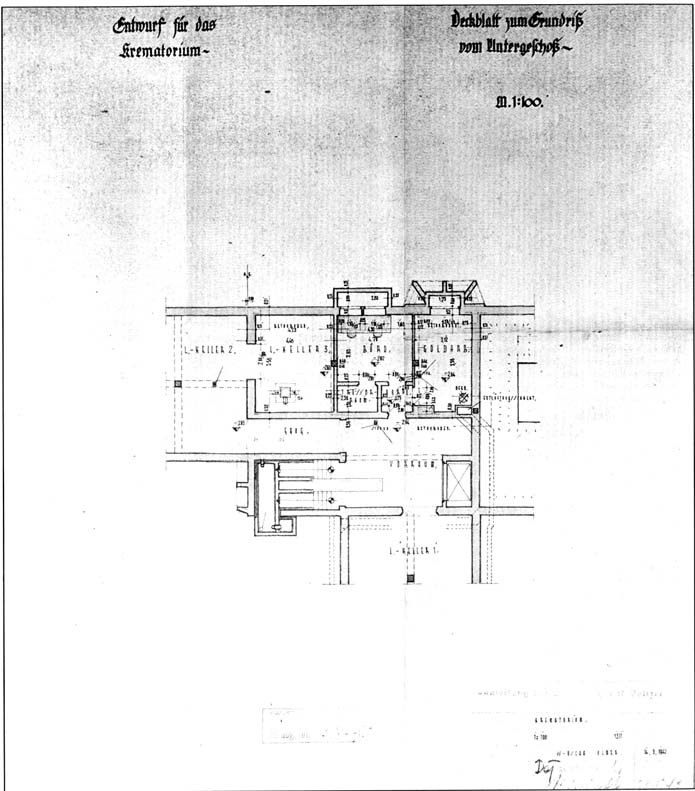| A s soon as the large scale extermination of the Jews began, the goldworking shop in Krematorium III was no longer used exclusively for the recovery of gold teeth, but also for melting down the victims' jewelry (rings, earrings, necklaces, bracelets, watches), Dr Miklos Nyiszli in his "Auschwitz, A doctor’s eyewitness account” mentions that: |
“the space corresponding to the dissection room in number one [Kr II] was here [in Krematorium III] used as a gold foundry …
The smelting took place in graphite crucible about two inches in diameter. The weight of the gold cylinder [actually a disc] was 140 grams. I know that figure to be exact because I had weighed more than one on an accurate scale in the dissection room [of Krematorium III].”
|
| This “foundry” produced rough disks 5 cm in diameter, 0.4 cm thick and weighing 140 g. Some of them can be seen in David Olère’s sketch, on the edge of the table, underneath the blowlamp, where the two prisoners are at work. |
|
 |
[Sketch by David Olère, 1945 or 46]
Reduced photograph of an early sketch by David Olère, former member of the Sonderkommando of Krematorium III, showing two prisoner gold founders at work, closely watched by an SS man. The scene is the room marked “Labor / Lab” on a Bauleitung drawing of Krematorium III: 2136 of 22/2/43.
(Source: Myriam Novitch) |
|
| Drawing 1311(p) |
 |
|

